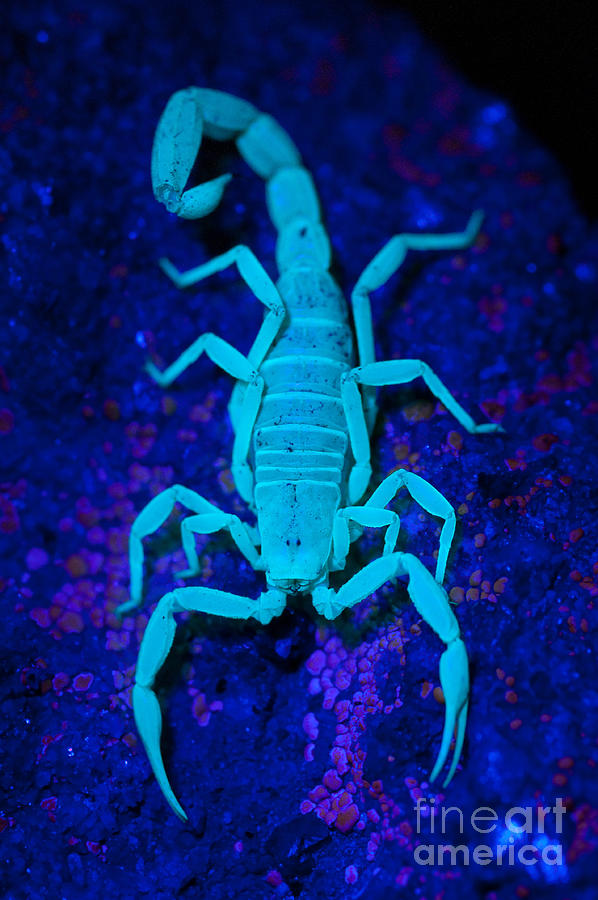
The fluorescence is thought by scientists to serve as an ultraviolet sensitivity mechanism, perhaps allowing the scorpion to avoid damaging light levels. Even after hundreds of millions of years, while all the other layers of the cuticle have been lost, this hyaline layer remains embedded in fossil rocks and still fluoresces. The hyaline layer of the cuticle is very tough. Scorpions fluoresce because they contain a fluorescent protein in the hyaline layer of their exoskeleton. Ultraviolet radiation itself is invisible, but illuminating certain materials with UV radiation prompts the visible effects of fluorescence and phosphorescence. A black light is the name commonly given to a lamp emitting almost entirely UV radiation and very little visible light. The Sun is the primary natural source of UV radiation. Ultraviolet (UV) radiation is defined as that portion of the electromagnetic spectrum between X-rays and visible light. Ultraviolet radiation (also known as UV radiation, UV light or ultraviolet rays) is a form of energy traveling through space.

Scorpions glow or fluoresce under UV light.

It is not understood exactly why this happens or what purpose it serves.A Black light is the name given to a lamp emitting UV radiation and very little visible light. Many scorpion species' exoskeletons have properties that cause fluorescence with certain wavelengths of light. Crickets, mice, and mealworms are some of its more favored choices of nourishment.Īnother nice trick the scorpion performs is that it glows under a black light. It feeds on many different types of insects and small animals. For obvious reasons, its diet is very different in captivity, and by no means is this scorpion a picky eater. Its venom has a low toxicity profile, and this certainly lends to its popularity among its handlers. It is generally easily handled and easy to care for. This scorpion may be gentle, but he is no pushover! If cornered, the scorpion will assume an aggressive stance, and if provoked further, it will most definitely attempt to sting and pinch whatever may be harassing it.īecause of its shy and relatively calm attitude, it is a popular choice of pet for scorpion enthusiasts. Despite its threatening appearance and impressive offensive equipment, this creature has a fairly shy and reclusive disposition, and likes spending its spare time hiding out in its deep burrows.

The emperor scorpion’s primary prey is termites and other insects, though they may occasionally feed on rodents or other small animals. However, in captivity, they can live for anywhere from 5 to 8 years.īabies riding on the back of the mother, a common scorpion youth activity, some spiders too. It generally has a short lifespan in the wild, averaging at about 2 years.

It can be found throughout West Africa’s forested areas, digging burrows for shelter. Its body is sleek and black, protected by a very hard exoskeleton. One of the largest species of scorpion in the world, it averages about 8 in (20 cm) in length. The emperor scorpion is probably the most recognizable creature of its kind.


 0 kommentar(er)
0 kommentar(er)
